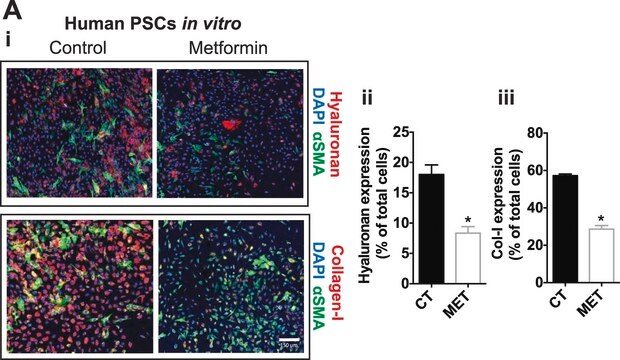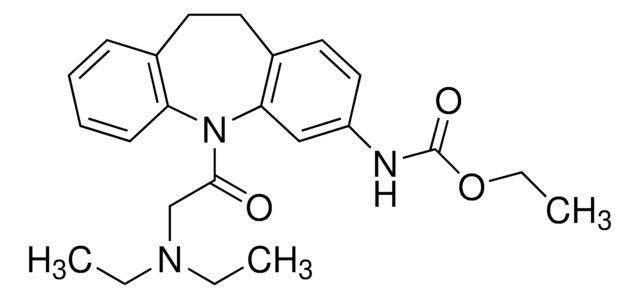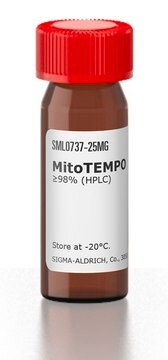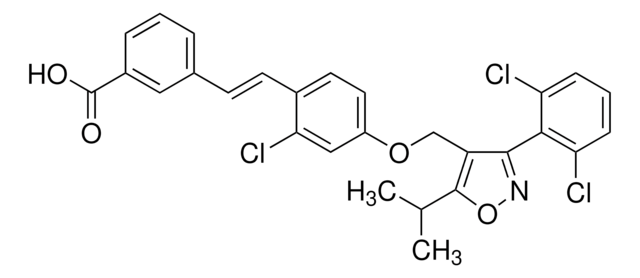Key Documents
T1443
TCPOBOP
≥98% (HPLC), solid
Synonim(y):
1,4-Bis-[2-(3,5-dichloropyridyloxy)]benzene, 3,3′,5,5′-Tetrachloro-1,4-bis(pyridyloxy)benzene
About This Item
Polecane produkty
Poziom jakości
Próba
≥98% (HPLC)
Postać
solid
kolor
white
rozpuszczalność
DMSO: >10 mg/mL
H2O: insoluble
temp. przechowywania
2-8°C
ciąg SMILES
Clc1cnc(Oc2ccc(Oc3ncc(Cl)cc3Cl)cc2)c(Cl)c1
InChI
1S/C16H8Cl4N2O2/c17-9-5-13(19)15(21-7-9)23-11-1-2-12(4-3-11)24-16-14(20)6-10(18)8-22-16/h1-8H
Klucz InChI
BAFKRPOFIYPKBQ-UHFFFAOYSA-N
informacje o genach
human ... NR1I3(9970)
Zastosowanie
Działania biochem./fizjol.
Cechy i korzyści
Uwaga dotycząca przygotowania
Kod klasy składowania
11 - Combustible Solids
Klasa zagrożenia wodnego (WGK)
WGK 3
Temperatura zapłonu (°F)
Not applicable
Temperatura zapłonu (°C)
Not applicable
Środki ochrony indywidualnej
Eyeshields, Gloves, type N95 (US)
Certyfikaty analizy (CoA)
Poszukaj Certyfikaty analizy (CoA), wpisując numer partii/serii produktów. Numery serii i partii można znaleźć na etykiecie produktu po słowach „seria” lub „partia”.
Masz już ten produkt?
Dokumenty związane z niedawno zakupionymi produktami zostały zamieszczone w Bibliotece dokumentów.
Nasz zespół naukowców ma doświadczenie we wszystkich obszarach badań, w tym w naukach przyrodniczych, materiałoznawstwie, syntezie chemicznej, chromatografii, analityce i wielu innych dziedzinach.
Skontaktuj się z zespołem ds. pomocy technicznej





